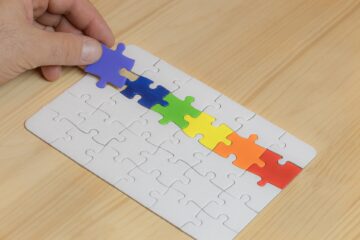![]()
Accession of Jammu and Kashmir:
When the British left India in 1947 all the princely states were included in India by signing the Instrument of Accession. On 26th October 1947, the same legal document was also signed between the King of Kashmir Maharaja Hari Singh and the Government of India, since that day Jammu and Kashmir became the part of India. But the Constitution of India was not yet complete, its making was still in progress and on 17th October 1949 Article 370 was incorporated in the Constitution.
In 1950 Constitution of India came in force whose Article 1 declares Jammu and Kashmir as the state of India and Article 370 states about the temporary status of Jammu and Kashmir. Thereafter on 14th May 1954, a Presidential order was passed by the then President Dr. Rajendra Prasad named ‘The Constitution Application to Jammu and Kashmir Order 1954’. Through this order, Article 35A was incorporated into our Constitution. Later on 17th November 1956, the Constitution of Jammu and Kashmir started to be applied which also declared Jammu and Kashmir as an integral part of India.
Phase of Political Changes
From 1947 to 1990 Jammu and Kashmir faced many political changes and in keeping in view the situation of that time Armed Forces Special Power Act was incorporated in Jammu and Kashmir in 1990. In 2015 Bhartiya Janta Party (BJP) along with Peoples Democratic Party (PDP) formulated government together and Mehbooba Mufti was made the CM of Jammu and Kashmir and later in 2018 BJP broke its alliance with PDP. According to the then article 92 of the Constitution of Jammu and Kashmir if the constitutional machinery of state does not run properly the Governor rule takes over. So from June 2018, Governor’s Rule started in Jammu and Kashmir, and in December 2018 President’s rule was imposed.
Coming forward in May 2019 BJP won the Parliamentary elections with the majority of votes and the election manifesto of BJP clearly stated about the removal of Article 35A and changes in Article 370 in the constitution. Article 30 was incorporated because in 1947 Instrument of Accession was signed and it was agreed to grant special status to Jammu and Kashmir as so was provided by Article 370.
Article 370 provided that other laws of India are not applicable in Jammu and Kashmir and special laws will be made for the said state but this Article also stated that it is a temporary provision. Its removal procedure was also provided in the Article itself which stated that whenever if a President wants he can issue a public order and seize the applicability of Article 370 but before issuing this order he had to take permission from the constituent assembly of Jammu and Kashmir but the deadlock in the issue was that constituent assembly of Jammu and Kashmir was dissolved in 1957.
To fulfill the special status given to Jammu and Kashmir by Article 370 the presidential order was passed in 1947 and Article 35A came in existence. This article 35A created discrimination among people living in Jammu and Kashmir and provided special rights and privileges to permanent residents (Permanent residents according to the constitution of J/K) of Jammu and Kashmir. There were various grounds to discriminate permanent and non-permanent residents which served as a speed breaker for the development in Jammu and Kashmir. Like any government jobs, higher education or ownership over a land could be acquired by only permanent residents and non-permanent residents or any other citizen of India could not. So after all these provisions be any qualified doctor or any researcher and teacher or any specialist would definitely not prefer to go there when they would have to face many limitations and problems. In all totality, the resistance in the integration of Jammu and Kashmir was due to these provisions.
The Day of Action
On the historic day 5th August 2019 President Ram Nath Kovind used his powers on the clause one of the Article 370 and issued another order on this naming ‘The Constitution (application to Jammu and Kashmir) order 2019’. This new order provided that it will overwrite the order of 1954 with immediate effect so this order effected in such a manner that article 35A and constitution of Jammu and Kashmir seized to exist.
After the release of the order of several changes were made in Article 370 and Jammu and Kashmir Reorganization Bill was passed. In article 370 the term ‘constituent assembly’ will be interpreted as ‘legislative assembly’. As the effect of the bill two Union Territories are formed one comprising the region of Ladakh, Kargil, and Leh and other comprising Jammu and Kashmir. Union Territory of Ladakh is without legislature and Union Territory of Jammu and Kashmir consists of legislature.
Conclusion
The effects of changes in Article 370 are that there will be single citizenship of residents of that territory, no special rights to residents, article 356 and 360 will now be applicable there, no separate flag of the region, provision for reservation for minorities and no separate constitution and Constitution of India will be applicable.



0 Comments